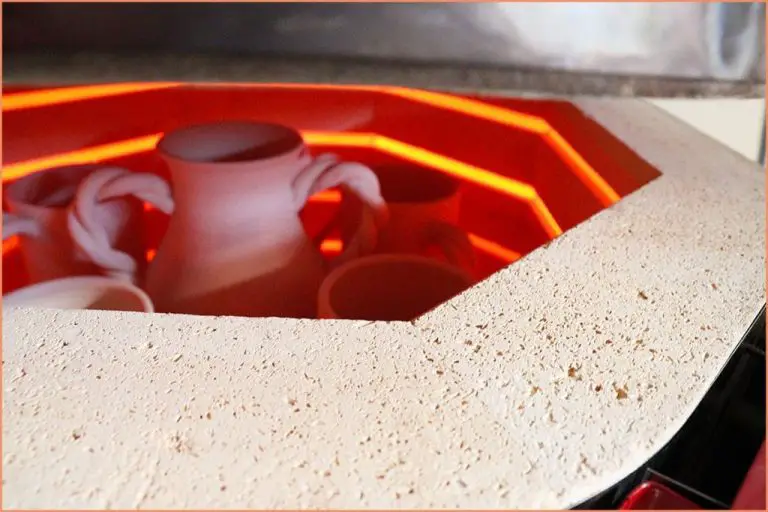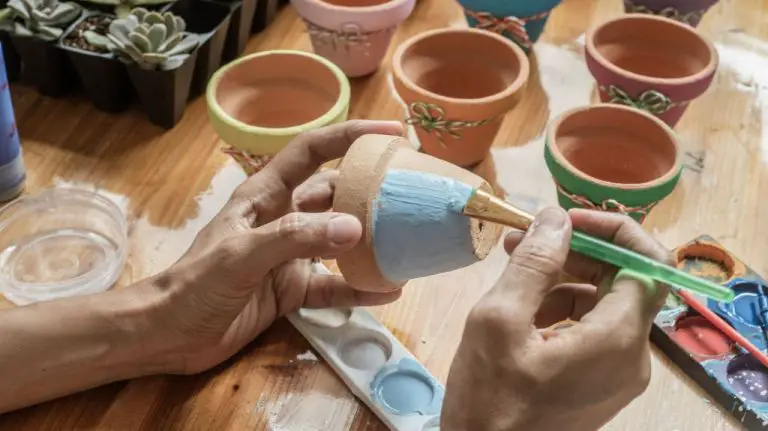Is It Safe To Make An Ashtray Out Of Polymer Clay?
Polymer clay is a type of modeling and sculpting clay that is popular among crafters and artists. It is made from PVC resin and various fillers and comes in a variety of colors. When baked in a standard oven, polymer clay hardens into a durable, plastic-like material.
Polymer clay can be shaped, molded, sculpted, textured, carved, and more. It is an extremely versatile material used to make jewelry, figurines, dolls, ornaments, decorative objects, and much more. Many crafters enjoy working with polymer clay because it is lightweight, easy to condition, takes fine detail well, and produces professional, finished results.
Due to its plasticity and ability to harden when baked, one question that arises is whether polymer clay can be used to create functional items like an ashtray. This article will examine the safety, design, and proper use considerations around making an ashtray from polymer clay.
Polymer Clay Safety
When it comes to polymer clay safety, the main concern is whether polymer clay releases toxic chemicals when baked or heated to high temperatures. Polymer clay is made from PVC resin, which can release small amounts of chlorine gas when heated to over 275°F. However, at regular baking temperatures (265°F or below), polymer clay is considered non-toxic and safe to work with.
The risks come from improper baking and subjecting polymer clay to temperatures above recommended levels. This causes the release of hydrochloric acid and other gases that should be avoided. Proper ventilation is important when working with polymer clay. Do not burn or incinerate polymer clay.
There are particular safety issues to consider when making an ashtray from polymer clay. The ashes and embers from cigarettes contain chemicals and reach high temperatures that can off-gas the polymer clay. Make sure the clay is properly cured before use and do not place lit cigarettes directly on the clay. Overheating areas of the ashtray can make that section more brittle and prone to cracking or releasing toxic fumes. Allow proper ventilation and avoid touching areas that become too hot.
Alternatives to Polymer Clay
While polymer clay is a popular DIY material, there are safer alternatives for making ashtrays. Ceramics, glass, and metals that can withstand high temperatures are better choices.
Ceramic materials like clay, porcelain, and terra cotta are excellent for ashtrays. When fired at high temperatures, ceramic becomes strong, non-flammable, and heat resistant. Ceramic ashtrays come in many styles and can be decorated with glazes.
Glass is also a durable non-flammable material suitable for ashtrays. It’s easy to clean and resists odors. Glass ashtrays let you see the cigarette butts and ashes clearly. They can have colorful glass swirls or etchings for decoration.
Metals like stainless steel, copper, and brass make attractive, sturdy ashtrays. They won’t melt from a hot cigarette. Etched, stamped, or patina designs add visual interest. Some metal ashtrays have removable inner liners for easy emptying.
Overall, glass, ceramic, porcelain, and metal are better alternatives than polymer clay if you want to DIY a safe, functional ashtray.
Best Practices for Polymer Clay
When working with polymer clay, following best practices is crucial for safety and achieving the best results. Proper curing and baking are especially important.
Polymer clay must be fully cured or “baked” after shaping to harden it completely. The curing time and temperature depends on the specific brand and type of polymer clay used. Follow the manufacturer’s instructions closely.
Typically, curing temperatures range from 265°F to 275°F for 15 minutes per 1⁄4 inch of thickness. Curing for too little time can result in surfaces remaining tacky. Over-curing can scorch or burn the clay. Use an oven thermometer to check that oven temperature is accurate.
Avoid extreme high temperatures when baking polymer clay. Do not exceed the recommended baking temperature as this can release toxic fumes or cause discoloration. If using a toaster oven, monitor closely to prevent overheating.
Allow clay pieces to cool fully before handling after baking. Polymer clay can be re-baked if needed, but avoid repeated baking as too much accumulated heat can deteriorate the clay over time.
Ash/Ember Safety
When making an ashtray out of polymer clay, one of the biggest safety concerns is the ash and embers from cigarettes or other smoking materials burning through the clay. Polymer clay can become softened and malleable at relatively low temperatures. The burning end of a cigarette can reach temperatures between 400-700°C. This is hot enough to scorch and melt many types of polymer clay if direct contact is made.
To prevent this, it’s important to use a durable polymer clay that can withstand higher temperatures without becoming malformed. Look for polymer clay that is rated for baking/curing at 130°C or higher. Stay away from low-temperature clays. You can also mix the clay polymer with materials like cornstarch or wood flour to increase heat resistance.
In addition to using a durable clay, allow adequate thickness in the ashtray walls and base. 3/8 to 1/2 inch thickness is recommended to prevent burn-through. Avoid thin areas and vary the shape so ash has more surface area to land on. A smooth, sloped interior without sharp corners or crevices will make it easier to remove ash safely.
Test the cured clay with an actual lit cigarette if possible. Look for any scorching, melting or impressions left from the ash. If any are present, try a different clay or increase the thickness until it can withstand direct ash contact without damage.
Ashtray Shape and Design
When designing your polymer clay ashtray, two key aspects of the shape are depth and width. The ashtray should be deep enough to contain a reasonable amount of ash and wide enough not to tip over easily.
A depth of at least 1 inch (2.5 cm) is recommended to prevent ashes from overflowing. The width should exceed the depth to provide stability. A ratio of at least 2:1 width to depth is optimal.
For example, a round ashtray could have a diameter of 4 inches (10 cm) and a depth of 1 to 1.5 inches (2.5 – 4 cm). A rectangular ashtray could be 4 inches wide by 6 inches long (10 x 15 cm) with a 1 inch (2.5 cm) depth.
Be sure to test your ashtray design with ash and embers to ensure it can contain them without tipping over or allowing them to fall out. Adjust the dimensions as needed to find the right balance of depth and width.
Proper Use and Care
When using a polymer clay ashtray, it is crucial to let the clay fully cure before use according to package instructions. Polymer clay contains chemicals that can release harmful fumes if burned before being fully cured. Allow at least 1-3 hours per 1/4 inch thickness for curing.
It is also important to clean polymer clay ashtrays regularly to prevent residue buildup. Use a soft cloth or brush to gently wipe away ash after each use. For tougher stains, create a baking soda and water paste and scrub gently. Avoid abrasive cleaners that could scratch the clay. With proper curing and regular cleaning, a polymer clay ashtray can be safely used for years.
Legal and Fire Safety
When it comes to homemade ashtrays, there are some legal and fire safety regulations to keep in mind. Many jurisdictions have laws prohibiting smoking in certain public places and buildings. While homemade ashtrays for private, personal use are generally allowed, it’s important to check your local laws before giving them away or selling them.
In the United States, the Consumer Product Safety Commission has requirements for the design of ashtrays to make them more fire-safe. These include:
- Ashtrays must be made of non-combustible materials and resistant to cigarette burns.
- They must have a stable base and be difficult to tip over.
- Ashtrays must be able to safely extinguish cigarettes and contain embers within the ashtray.
- Any ashtrays sold commercially must comply with these fire safety standards.
While homemade ashtrays don’t have to meet the same legal standards, it’s wise to follow similar fire-safe design principles. Opt for a wide, stable base in a non-flammable material like clay, metal or glass. Make sure the ashtray is deep enough to fully contain cigarette embers and ash.
Following basic fire safety tips will help minimize risks when using a homemade ashtray. Don’t leave burning cigarettes unattended, empty the ashtray frequently, and avoid placing it on flammable surfaces. Taking these simple precautions will allow you to safely enjoy your homemade ashtray.
Conclusion
When used properly, polymer clay can be a fun, creative, and safe material for making handcrafted items like ashtrays. However, there are some important safety considerations to keep in mind.
Be sure to use polymer clays made for arts and crafts, not modeling clay which contains asbestos. Work in a well-ventilated area and avoid breathing in any fumes or dust. Condition and bake the clay thoroughly according to package directions to make it non-toxic.
Research the type of polymer clay to ensure it can withstand heat from ashes and embers. Use a low-temperature clay rated for oven baking. Create a design with thick, sloped walls to prevent burning. Apply a protective sealant if needed.
Never leave a lit cigarette unattended in an ashtray. Empty ashes into a metal container and wash regularly. Avoid placing ashtrays near flammable materials. Check local ordinances before using a homemade ashtray.
With smart design and safe use practices, a polymer clay ashtray can be a crafty and functional decorative piece. Just be sure to put safety first when working with this material.
References
[1] “Is Polymer Clay Safe? What Are the Concerns with Polymer Clay?” ArtsyMadsy, 12 Sept. 2019, artsymadsy.com/is-polymer-clay-safe/.
[2] Tran, Vi. “The Dangers of Polymer Clay and The Healthiest/Safest Brands to Use.” Made Urban, madeurban.com/the-dangers-of-polymer-clay-and-the-healthiest-safest-brands-to-use/. Accessed 15 Mar. 2023.
[3] Carlson, Cat. “Is Polymer Clay Toxic? Safe Handling Tips.” The Blue Bottle Tree, 7 June 2020, thebluebottletree.com/is-polymer-clay-toxic/.
[4] “Ashtray Safety Tips.” National Fire Protection Association, www.nfpa.org/Public-Education/Fire-causes-and-risks/Top-fire-causes/Smoking/Ashtray-safety-tips. Accessed 15 Mar. 2023.
[5] Winokur, Ellen. “Best Practices for Working With Polymer Clay.” Craftsy, 12 June 2020, www.craftsy.com/post/polymer-clay-safety-best-practices/.


